Table of Contents
Thinking about opening an indoor playground? You're not alone! These vibrant spaces are a huge hit with families, offering a safe and fun environment for kids to burn off energy, no matter the weather. But before you dive in, one big question looms: How much does indoor playground equipment cost? It's a crucial question, and the answer isn't always straightforward.
Why Indoor Playgrounds Are a Hit with Families
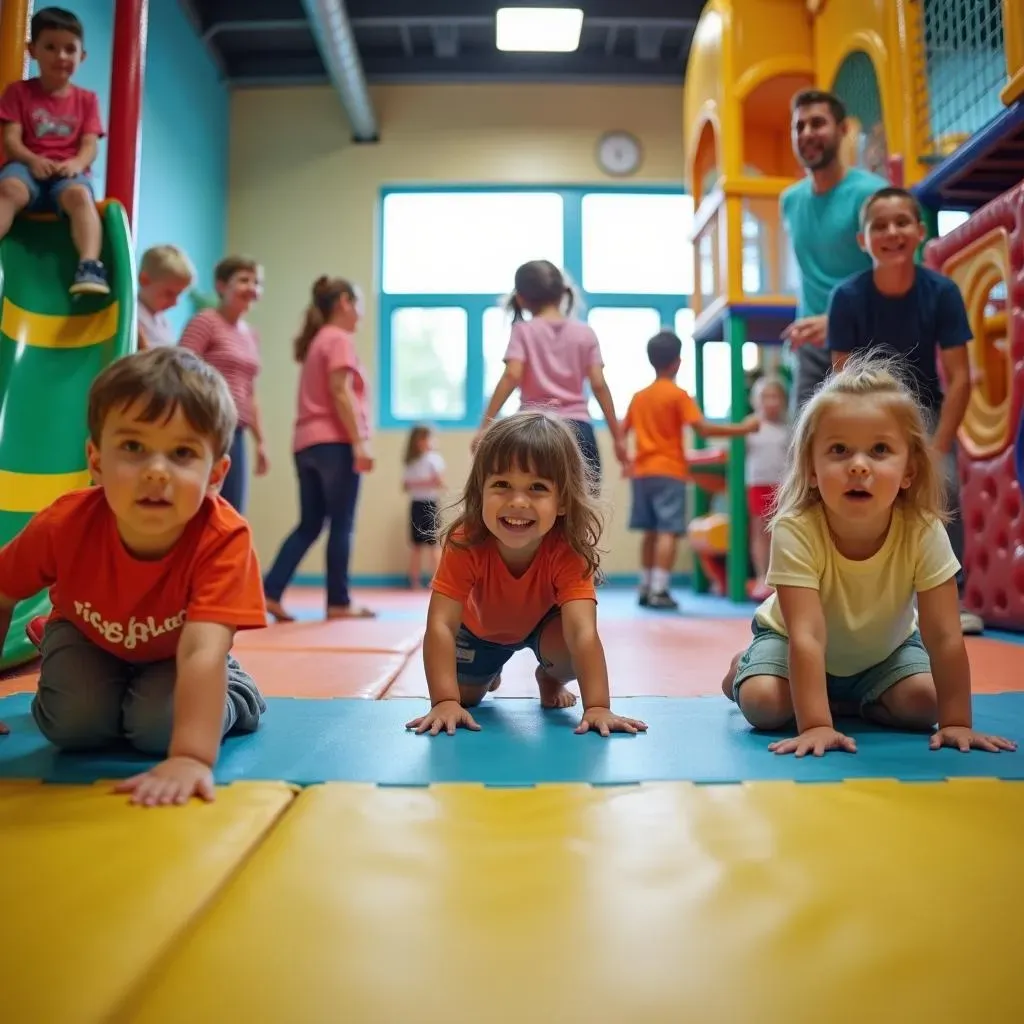
Why Indoor Playgrounds Are a Hit with Families
Safety First: A Parent's Peace of Mind
Let's face it, playgrounds can be a bit of a minefield. From scraped knees to unexpected tumbles, outdoor play often comes with a side of parental anxiety. Indoor playgrounds, on the other hand, are designed with safety as a top priority. Soft padding, enclosed structures, and vigilant staff create a controlled environment where kids can explore and challenge themselves without the constant fear of serious injury. It's a huge relief for parents, allowing them to relax and enjoy watching their children have fun.
Think about it: no more worrying about splinters from old wooden structures or hard falls onto unforgiving surfaces. Indoor playgrounds use modern materials and designs to minimize risks, making them a haven for active kids and peace-seeking parents alike.
Weather-Proof Fun: Rain or Shine, the Play Never Stops
One of the biggest advantages of indoor playgrounds is their immunity to the elements. Whether it's a scorching summer day or a freezing winter afternoon, the fun never has to stop. This is especially appealing to families with young children who need regular opportunities for physical activity, regardless of the weather outside. Indoor playgrounds provide a consistent, reliable option for active play, year-round.
Consider the alternative: being cooped up at home with restless kids bouncing off the walls. An indoor playground offers a much-needed escape, providing a stimulating and engaging environment that keeps everyone happy and sane. Plus, it's a great way to avoid the dreaded "screen time" battle!
More Than Just Play: Development and Socialization
Indoor playgrounds aren't just about burning energy; they're also valuable spaces for development and socialization. Climbing structures, tunnels, and obstacle courses help children develop gross motor skills, coordination, and problem-solving abilities. These activities encourage them to push their limits, build confidence, and learn through play.
Furthermore, indoor playgrounds provide opportunities for children to interact with their peers, learn to share, and develop social skills. Whether it's collaborating to build a tower of blocks or taking turns on the slide, these interactions foster important social-emotional growth. In a world increasingly dominated by screens, indoor playgrounds offer a vital space for real-world connection and social development.
Breaking Down the Costs: How Much Does Indoor Playground Equipment Really Cost?
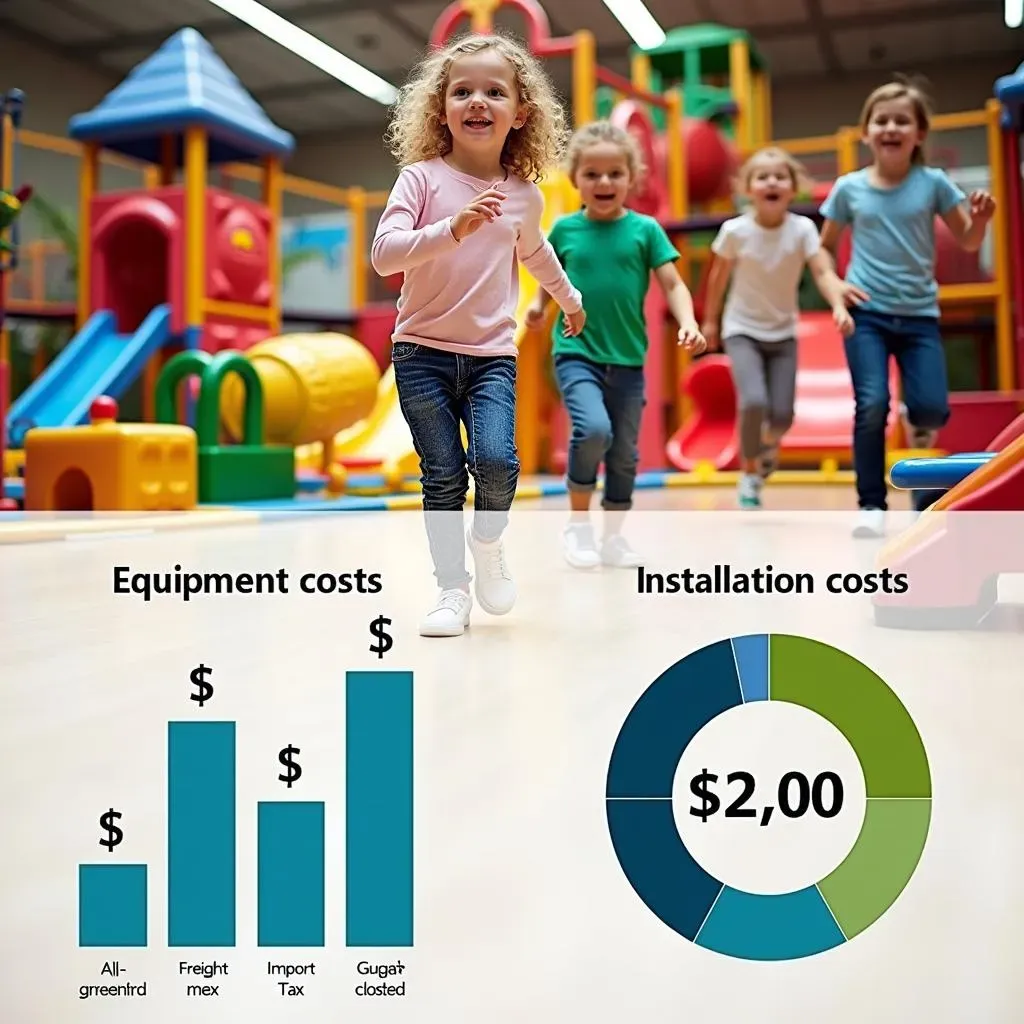
Breaking Down the Costs: How Much Does Indoor Playground Equipment Really Cost?
The Big Picture: Initial Investment
let's get down to brass tacks. How much does indoor playground equipment cost, really? The initial investment is the biggest hurdle for most aspiring playground owners. You're generally looking at a range of $30,000 to $100,000, but honestly, that's just a starting point. The final number depends on a whole bunch of factors, like the size of your playground, the complexity of the equipment, and where you're sourcing it from. Think of it like buying a car – you can get a basic model or load it up with all the bells and whistles, and the price will reflect that.
Don't forget to factor in freight, import taxes (if applicable), and installation costs. I know, it sounds like a lot, but breaking it down helps. The equipment cost is usually the FOB (Free On Board) price, meaning it covers the cost of the goods up to the point of shipment. Then you've got to get it to your location, which is where freight comes in. Import taxes vary depending on your country's regulations, so definitely do your research!
Cost Component | Estimated Range | Notes |
|---|---|---|
Equipment (FOB Price) | $30,000 - $100,000+ | Varies with size, complexity, and supplier. |
Freight | Varies | Depends on distance and shipping method. |
Import Tax | Varies | Check your country's import regulations. |
Installation | $3,000 - $15,000 | Can be DIY or professional. |
Hidden Costs and Budget Busters
Beyond the obvious expenses, there are a few hidden costs that can sneak up on you if you're not careful. Installation, for instance, can be a significant expense if you opt for professional help. While some suppliers offer installation services, you'll likely need to cover their travel expenses, which can add up quickly. Alternatively, you can save money by installing the equipment yourself, but be prepared for a time commitment and potential headaches. Make sure you factor in safety certifications and inspections. These are non-negotiable and can add to your upfront costs.
Another potential budget buster is customization. While adding custom elements to your playground can make it stand out, it also comes with a premium price tag. Before you get carried away with custom designs, carefully consider your budget and prioritize the essential features that will provide the most value to your customers. Remember, you can always add more bells and whistles later as your business grows!
Mini vs. Mega: Playground Size and Budget Considerations
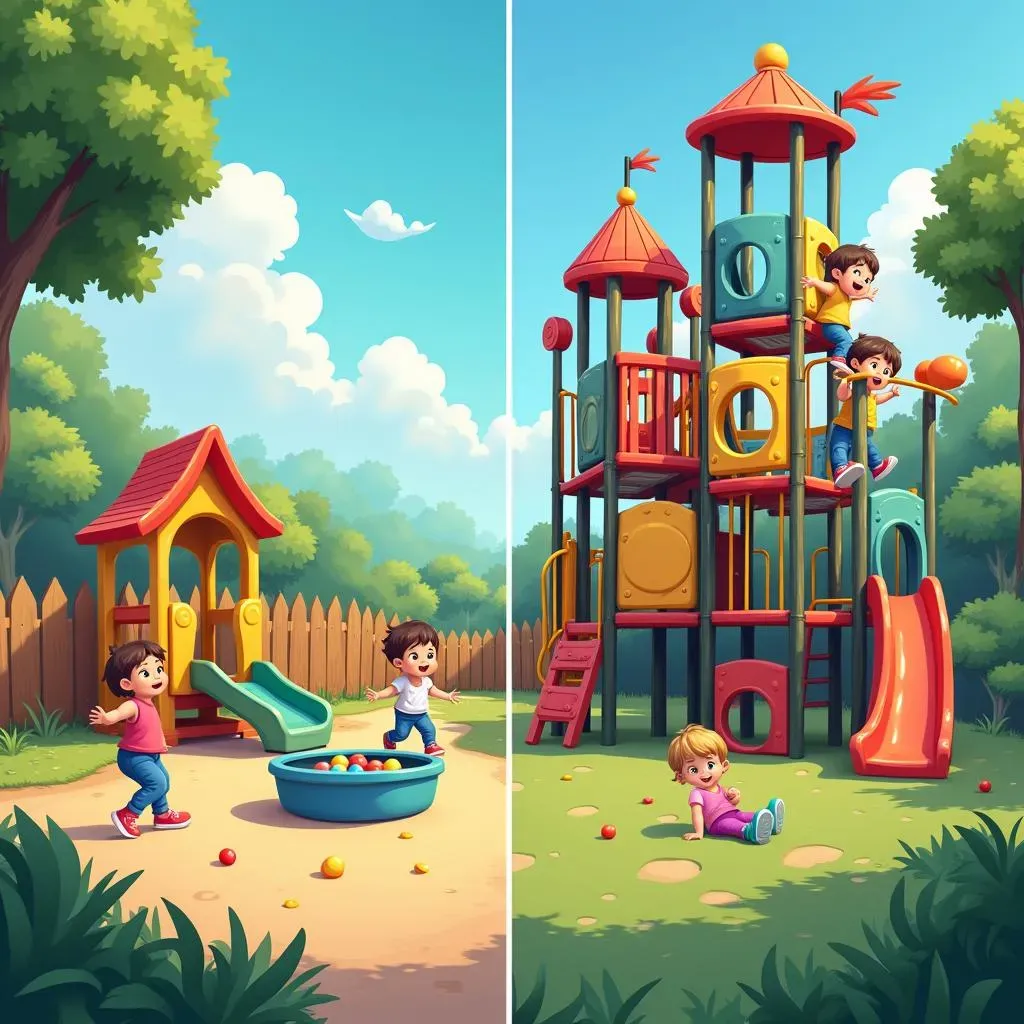
Mini vs. Mega: Playground Size and Budget Considerations
Small Beginnings: The Appeal of Mini Playgrounds
So, you're picturing your indoor playground, but are you thinking cozy corner or sprawling wonderland? The size of your playground dramatically impacts your budget. Mini playgrounds, think smaller structures perfect for toddlers and younger children, are a fantastic option for startups with limited space or tighter budgets. These setups typically feature a compact play structure with a slide, a small ball pit, and maybe some soft play elements. They're ideal for cafes, smaller community centers, or even as an add-on to existing businesses.
The beauty of a mini playground is its affordability and ease of installation. Because they're smaller and less complex, the equipment costs are significantly lower compared to larger commercial setups. Plus, they require less floor space, which can translate to lower rent and utility bills. It's a great way to test the waters and build a customer base without breaking the bank.
Going Big: The Potential of Large Commercial Playgrounds
On the other end of the spectrum, we have the mega playgrounds – the sprawling, multi-level structures that are designed to wow. These commercial playgrounds are built for high-traffic venues like dedicated play centers, family entertainment complexes, and large recreational facilities. They often feature a wide range of activities, including multiple slides, elaborate climbing structures, trampoline areas, rope courses, and even themed zones. The goal? To provide an immersive and unforgettable play experience that keeps kids entertained for hours.
Of course, all that fun comes at a cost. Large commercial playgrounds require a substantial investment, not only in equipment but also in space, installation, and ongoing maintenance. However, they also have the potential to generate significantly higher revenue, attracting a larger customer base and offering a wider range of services, such as birthday parties and special events. If you're aiming to create a destination playground that draws families from far and wide, a large commercial setup might be the way to go.
Feature | Mini Playground | Large Commercial Playground |
|---|---|---|
Target Audience | Toddlers, younger children | Wider age range |
Typical Size | Small, compact | Large, multi-level |
Equipment Cost | Lower | Higher |
Space Requirements | Less | More |
Revenue Potential | Lower | Higher |
MustHave Indoor Playground Equipment: Balancing Fun and Function
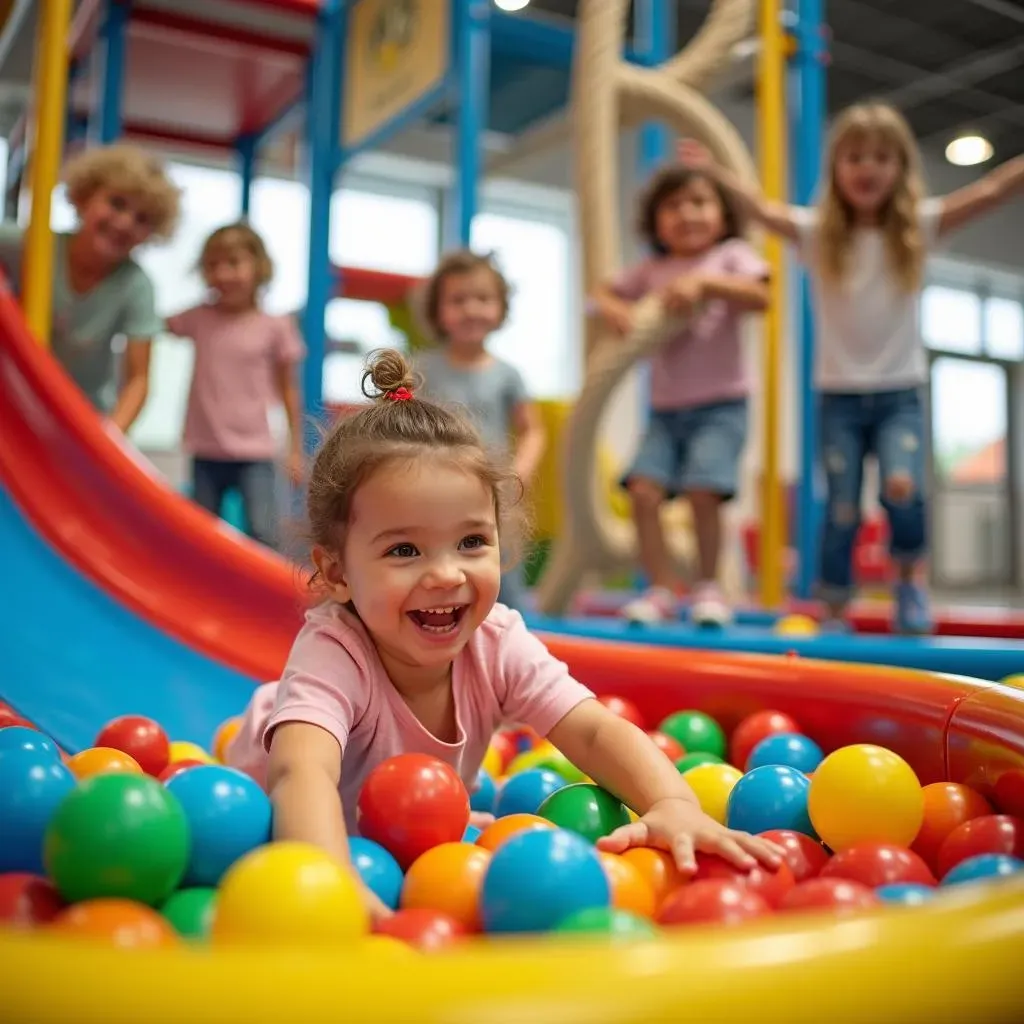
MustHave Indoor Playground Equipment: Balancing Fun and Function
Slides: A Classic for a Reason
No indoor playground is complete without a slide! Slides are a timeless source of joy for kids of all ages, offering a thrilling and satisfying experience. But when choosing slides, it's important to consider the age range of your target audience and the available space. For younger children, opt for smaller, gentler slides with soft landings. For older kids, you can go bigger and bolder with winding slides, spiral slides, or even drop slides (if you're feeling adventurous!).
Don't underestimate the power of a well-designed slide. It can be a focal point of your playground, attracting kids and creating a sense of excitement. Plus, slides promote gross motor skills, balance, and coordination. It's a win-win!
Ball Pits: Sensory Fun and Social Interaction
Ah, the ball pit – a playground staple that never fails to delight. Ball pits offer a unique sensory experience, providing a sea of colorful balls for kids to dive into, swim through, and play with. They're also a great way to encourage social interaction, as children naturally gravitate towards each other in the ball pit, sharing laughter and creating memories.
When selecting a ball pit, prioritize hygiene and safety. Choose a ball pit made from durable, easy-to-clean materials, and establish a regular cleaning schedule to prevent the spread of germs. Also, ensure that the ball pit is appropriately sized for your target age group and that it has soft padding around the edges to prevent injuries.
Climbing Structures: Adventure and Physical Challenge
For kids who love a challenge, climbing structures are a must-have. These structures can range from simple rope ladders and climbing walls to elaborate jungle gyms and obstacle courses. They offer a fantastic way to develop strength, coordination, and problem-solving skills. Plus, they encourage kids to push their limits and build confidence as they conquer new heights.
When choosing climbing structures, safety is paramount. Ensure that the structures are made from durable, high-quality materials and that they are properly installed and maintained. Also, provide adequate padding underneath the structures to cushion falls. Consider the age range of your target audience and choose structures that are appropriately challenging but not overly difficult or dangerous.
Equipment | Benefits | Considerations |
|---|---|---|
Slides | Thrill, gross motor skills | Age range, safety |
Ball Pits | Sensory play, social interaction | Hygiene, safety |
Climbing Structures | Strength, coordination | Safety, age-appropriateness |
Finding the Right Supplier: Quality, Safety, and CostEffectiveness
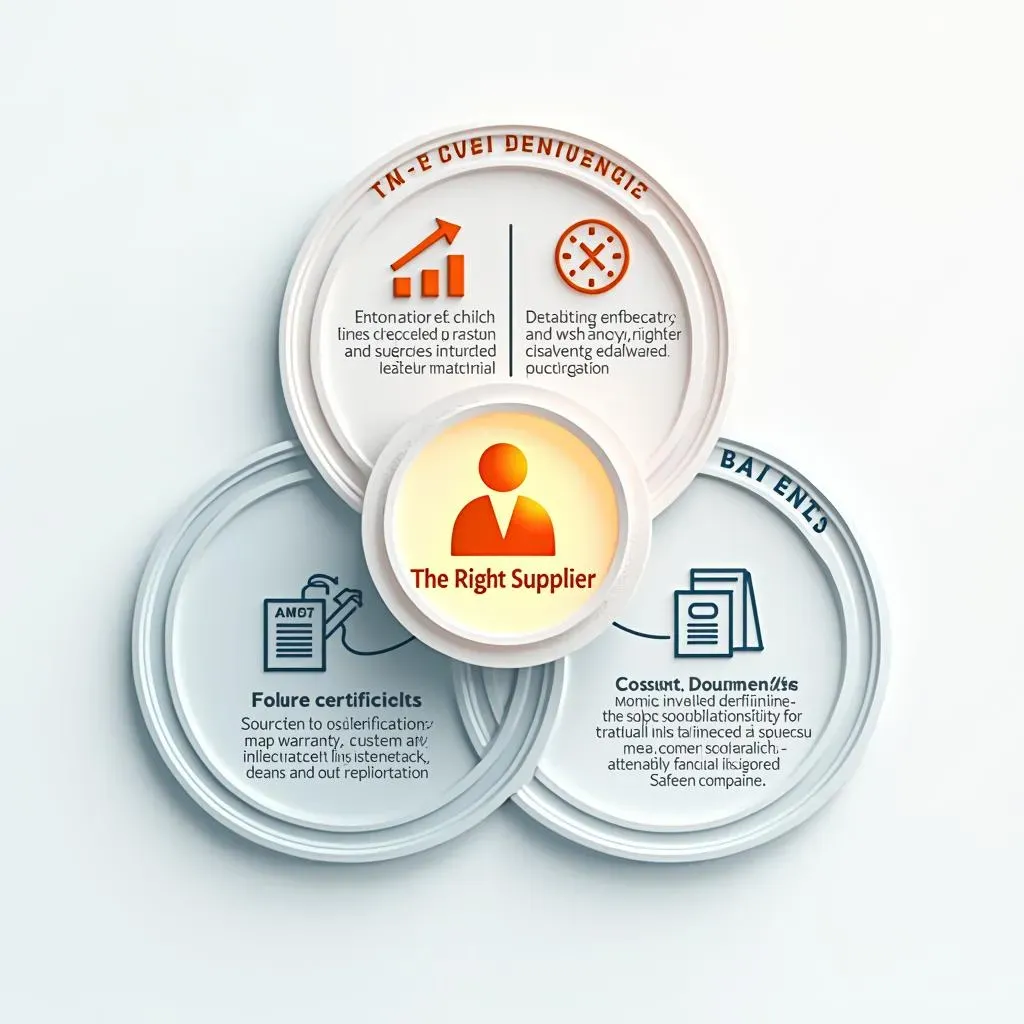
Finding the Right Supplier: Quality, Safety, and CostEffectiveness
The Quest for Quality: More Than Just a Price Tag
Alright, so you know how much does indoor playground equipment cost, but finding the cheapest option isn't always the smartest move. When it comes to indoor playground equipment, quality is king. You're entrusting the safety of children to these structures, so skimping on quality is simply not an option. Look for suppliers who use durable, non-toxic materials and adhere to strict manufacturing standards. Don't be afraid to ask for certifications and test reports to verify the quality of their products. Remember, a slightly higher upfront cost for quality equipment can save you money in the long run by reducing maintenance, repairs, and potential liability issues. It's an investment in peace of mind.
Safety First: Certifications and Standards
Safety certifications are your best friend when choosing a supplier. Look for certifications like ASTM (American Society for Testing and Materials) or EN (European Norm) that demonstrate the equipment meets established safety standards. These certifications ensure that the equipment has been tested for things like structural integrity, flammability, and toxicity. Don't just take the supplier's word for it – verify the certifications with the certifying organization. It's a crucial step in protecting the children who will be using your playground.
Also, ask about the supplier's warranty policy. A reputable supplier should stand behind their products and offer a reasonable warranty against defects and failures. Read the fine print carefully to understand what's covered and what's not. A strong warranty is a sign that the supplier is confident in the quality and durability of their equipment.
Experience Matters: Track Record and Reputation
How long has the supplier been in business? Do they have a solid track record of providing quality equipment and excellent customer service? These are important questions to ask when evaluating potential suppliers. Look for suppliers who have a proven track record of success and a positive reputation in the industry. Check online reviews, ask for references, and talk to other playground owners who have worked with the supplier. A supplier with a long history and a good reputation is more likely to deliver on their promises and provide you with the support you need.
Also, consider the supplier's experience with similar projects. Have they installed playgrounds of the same size and type as yours? Do they understand the unique challenges and requirements of your project? A supplier with relevant experience will be better equipped to guide you through the process and ensure a successful outcome.
Factor | Considerations |
|---|---|
Certifications | ASTM, EN, verify with certifying organization |
Warranty | Read the fine print, coverage details |
Experience | Years in business, track record, references |
Cost-Effectiveness: Balancing Price and Value
While quality and safety are paramount, cost is also a major consideration. You need to find a supplier who offers a fair price without compromising on quality. Get quotes from multiple suppliers and compare them carefully. Don't just focus on the upfront cost of the equipment – consider the long-term costs of maintenance, repairs, and potential downtime. A slightly more expensive option that is more durable and requires less maintenance may actually be more cost-effective in the long run.
Also, ask about financing options and payment plans. Some suppliers may offer financing to help you spread out the cost of the equipment over time. This can be a great way to make your project more affordable and manageable. Just be sure to carefully review the terms and conditions of any financing agreement before you sign on the dotted line.
Final Thoughts: Building Your Indoor Playground Dream
So, how much does indoor playground equipment cost? As we've explored, the answer is multifaceted, depending on your vision, space, and chosen supplier. By carefully considering these factors and prioritizing quality and safety, you can create a thriving indoor playground that brings joy to families and success to your business. Remember to research thoroughly, compare quotes, and never compromise on safety. With the right planning and execution, your indoor playground can become a beloved community hub for years to come.